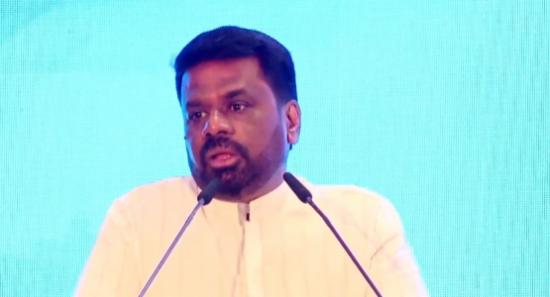.webp)
-794956.jpg)
Sri Lanka’s Debt Crisis Became a Model for Global Reform - IMF's Gita Gopinath
COLOMBO (News 1st); Dr. Gita Gopinath, First Deputy Managing Director of the International Monetary Fund (IMF), described Sri Lanka’s debt restructuring as a case study with far-reaching implications for the global financial community. Her remarks underscored the complexity of the process and the valuable lessons it offers for other nations facing similar fiscal challenges.
She was speaking at the “Sri Lanka’s Road to Recovery: Debt and Governance” conference in Colombo jointly hosted by the CBSL, the Ministry of Finance, and the IMF.
“The experience of Sri Lanka holds important lessons for the world,” Gopinath stated, as she reflected on the country’s journey through one of the most intricate sovereign debt restructurings in recent history.
Sri Lanka’s restructuring effort, she explained, was shaped by three major challenges.
The first was the calibration of restructuring targets to ensure sufficient debt relief. This required a delicate balance between policy adjustments and debt reduction, tailored to the country’s unique economic conditions.
The IMF worked closely with Sri Lankan authorities to design targets that accounted for the severity of the crisis, while also recognizing the country’s strengths—namely, its high levels of private savings, robust tourism sector, and steady remittance inflows.
As a result of the restructuring, Sri Lanka is projected to reduce its external debt service as a share of GDP by half over the next decade. Additionally, the external and total debt stock are expected to decline by 27 and 34 percentage points of GDP, respectively.
The second challenge involved coordinating among a diverse and complex group of external creditors.
Gopinath highlighted the role of the Official Creditor Committee, chaired by France, India, and Japan, in bringing together a wide range of stakeholders. China, while not formally part of the committee, engaged in informal coordination. Despite these efforts, the process was hampered by difficulties in information sharing and concerns over equitable treatment among bilateral creditors. The IMF played a critical role in facilitating dialogue and providing technical support through its “good offices.”
The third and perhaps most sensitive challenge was managing the risks to financial and social stability posed by the restructuring of domestic debt.
With a significant portion of Sri Lanka’s debt held domestically—including by the financial sector, central bank, and public pension funds—the government had to proceed cautiously. To avoid destabilizing the economy, authorities opted against nominal debt reductions, instead focusing on lowering interest rates and extending maturities.
Gopinath emphasized that Sri Lanka’s experience has already begun to shape the future of sovereign debt restructuring. It has led to the development of improved methodologies for evaluating state-contingent debt features and inspired new approaches to creditor coordination and instrument design. Alongside other recent restructuring cases, Sri Lanka’s journey has helped catalyze important reforms to the IMF’s debt policies.
“For Sri Lanka, the experience with the debt restructuring drives home the importance of managing the economy such that a similar situation will never arise again,” Gopinath concluded, reinforcing the need for continued fiscal discipline and forward-looking economic governance.
Other Articles
Featured News





.png )
-794982_550x300.jpg)
-794970_550x300.jpg)






-794314_550x300.jpg)
-794302_550x300.jpg)
-794296_550x300.jpg)
-794290_550x300.jpg)
-792874_550x300.jpg)








.webp)






